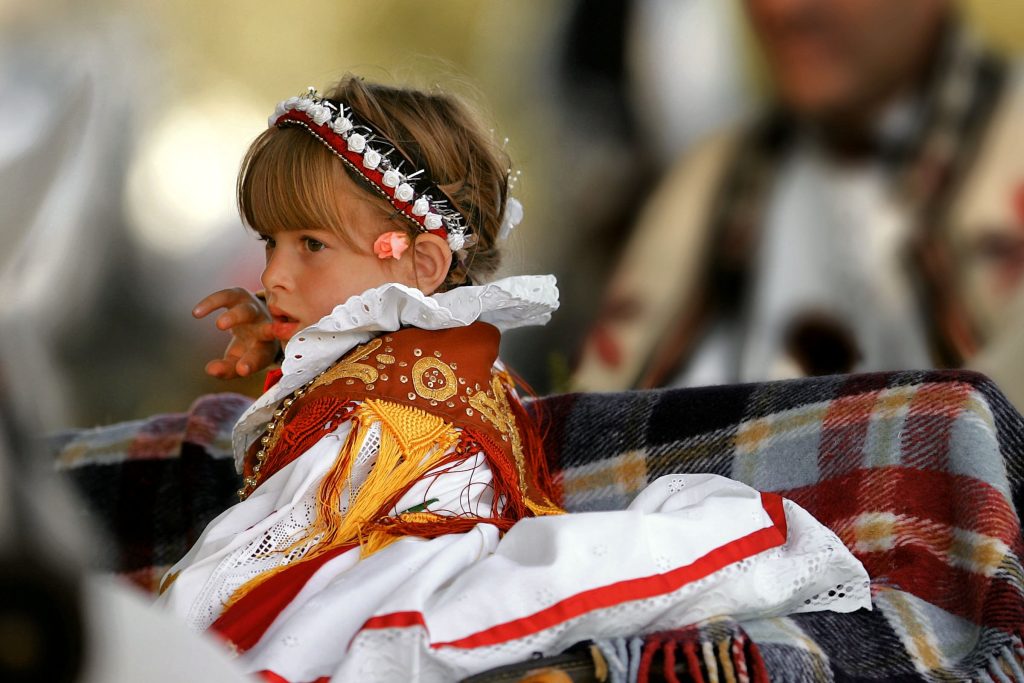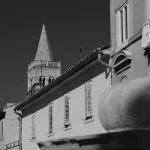We’ve explored many of the dialects, subdialects and indeed languages in their own right as some linguists consider them to be which are spoken across modern Croatia. From the Dubrovnik subdialect (Ragusan) in the extreme south of Dalmatia to Northwestern Kajkavian in areas like Zagorje, the ways in which people speak in this country deviate from what we know as standard Croatian language enormously. That goes without even mentioning much about old Dalmatian, Zaratin, once widely spoken in and around Zadar, Istriot, or Istro-Venetian.
Heading to the overlooked eastern part of Croatia, we find ourselves in Slavonia. This region is dominated by agriculture, and in contrast to most of the rest of the country, it is flat, making it perfect for fields as far as the eye can see. Formerly the bread basket of Croatia and indeed the wider region, Slavonia has unfortunately become synonymous with Croatia’s burning demographic issues which have since spread across even the more economically favourable areas.
Much like almost every other part of Croatia, Slavonia has its various dialects and subdialects. In this article, I’ll stick to the basic Slavonian dialect before delving into deeper specifics surrounding subdialects.
Where is the Slavonian dialect spoken?
The name certainly gives this one away – in the eastern part of Croatia. First and foremost, the Slavonian dialect is sometimes called the Slavonic dialect and is a dialect of the far wider Shtokavian, one of the three main dialects making up standard Croatian language as we know it today. It boasts numerous more archaic features when compared to other dialects based on Shtokavian and is spoken by ethnic Croats who come from various parts of Slavonia. As a marginal western Shtokavian dialect, the beginning of its linguistic development looked starkly different to the end result, it was also spoken in more areas than it is today.
A brief history of the Slavonian dialect
Ways of speaking that belong to the wider Slavonian dialect have been being spoken to varying degrees in the extreme northeast of parts of the country in which Croatian is spoken since medieval times. Given the fact that they are located primarily in the northwest, they are peripherally located and have features of marginality. That means that while the Slavonian dialect is undoubtedly Shtokavian, it does connect in some ways quite closely with both the Chakavian and the Kajkavian dialects.
One might assume, given Slavonia’s geographical position, that the Slavonian dialect would have far, far more in common with Kajkavian. Such an assumption would be more than logical, but as I’ll explain a little further down, endless migration and settlers from elsewhere made sure that Shtokavian was far more prominent.
Croatian history has been turbulent for an incredibly long time, and with the invasions of the Ottomans and various changes of power and even recognised states, one can imagine the sheer amount of migration that has taken place in and around these lands as the centuries have passed by. This naturally had an enormous effect on the languages spoken, where they’re spoken, and how they’re spoken. It is precisely because of strong waves of migration over time that the linguistic connections between the Slavonian dialect and the Kajkavian dialect were largely severed, but the results of these old connections are still evident in the details if one looks closely (and of course, if they know what they’re looking at).
The demographic crisis in Slavonia isn’t something that came about recently or even during more modern historical periods. Back during the rule of the Ottoman Empire, Slavonia lost a very significant part of its local population, attracting the populations of what were then much poorer neighbouring regions. Settlers from Herzegovina were abundant in Slavonia, and they naturally heavily influenced the physiognomy of the native population’s speech over time.
As I touched on above when I mentioned Slavonia’s position on the map and the proximity of Kajkavian speaking areas to it, one would assume that Kajkavian would have more of a ”say” in the Slavonian dialect, and historically, you’d be right for assuming so. In a historical sense, the Slavonian dialect was once closely connected with Kajkavian, but migrations and new settlers from elsewhere changed that, and as a result of those very migrations, this connection decreased and decreased, and in some cases it was even broken entirely. The Podravina subdialect is more or less the only subdialect which has done well to retain its Kajkavian speech connection.
For more on the Croatian language, dialects and subdialects, as well as learning to swear in Croatian, make sure to check out our dedicated lifestyle section.











